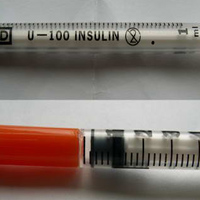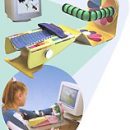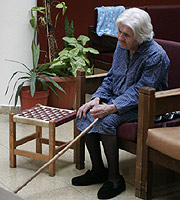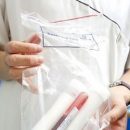Diabetic Coma is a formidable complication of diabetes. Diabetic coma occurs against the background of low insulin concentration, which runs the chain of biochemical reactions in the body. Glucose does not enter the tissue, their own fats are used as an energy resource, ketoacidosis develops.
Content
The basis of the development of a diabetic (hyperglycemic) coma is insulted in sufficient. In essence, the diabetic coma is the complication of severe diabetes.
Development mechanism of diabetic coma
 With a lack of insulin, the utilization of glucose tissues is disturbed, which leads to hyperglycemia (increasing blood glucose levels), which gives the main symptoms of this coma. Glucose deficiency in cells causes incomplete fats, as a result of this, the organism accumulates ketone bodies. Insufficient transport of glucose to tissues leads to an increased decay of endogenous fats. At the same time, the synthesis of ketone bodies is enhanced in the liver and their oxidation is disturbed, which leads to the development of ketosis. Symptoms arising from diabetic coma due to the development of hypercohemia (accumulation of ketone bodies). Ketone bodies have a toxic effect on the central nervous system, they cause acidosis (shifting the pH of the medium in the acidic side), change the electrolyte balance, due to which the loss of potassium ions, sodium, magnesium, chlorine is noted. High hyperglycemia along with polyuria (increased urine release) causes dehydration tissues. Hyperglycemia and ketoacidosis cause significant changes in mineral exchange, which leads to the development of cardiovascular and renal failure.
With a lack of insulin, the utilization of glucose tissues is disturbed, which leads to hyperglycemia (increasing blood glucose levels), which gives the main symptoms of this coma. Glucose deficiency in cells causes incomplete fats, as a result of this, the organism accumulates ketone bodies. Insufficient transport of glucose to tissues leads to an increased decay of endogenous fats. At the same time, the synthesis of ketone bodies is enhanced in the liver and their oxidation is disturbed, which leads to the development of ketosis. Symptoms arising from diabetic coma due to the development of hypercohemia (accumulation of ketone bodies). Ketone bodies have a toxic effect on the central nervous system, they cause acidosis (shifting the pH of the medium in the acidic side), change the electrolyte balance, due to which the loss of potassium ions, sodium, magnesium, chlorine is noted. High hyperglycemia along with polyuria (increased urine release) causes dehydration tissues. Hyperglycemia and ketoacidosis cause significant changes in mineral exchange, which leads to the development of cardiovascular and renal failure.
Diabetic Coma is often developing in young people, since at this age, diabetes is much harder than in old age. In order to occur this coma, factors such as the late diagnosis of diabetes, untimely cancellation of insulin or reduce its dose, overwork, stressful situations, the addition of secondary infections and T. D.
Basic symptoms of coma
During the diabetic coma distinguish 2 periods - a precancetous state and to whom. Prema develops usually gradually. Patients complain of general malaise, weakness, drowsiness, loss of appetite, nausea, vomiting, thirst, headache. In patients of young age, severe abdominal pain appear, the cause of which is the dehydration of the body. In this case, erroneous diagnosis is possible «acute belly». With increasing ketoacidosis, these phenomena achieves greater severity. Apathy, in the exhaled patient air, the smell of acetone appears, the skin becomes dry, itching. Dehydration of the body leads to a decrease in the volume of circulating blood, resulting in tachycardia (rapid heartbeat), inclination to reduced blood pressure.
When studying peripheral blood, leukocytosis (increasing the number of leukocytes), high hyperglycemia (increasing blood glucose), hyperketonemium (increase in blood ketone bodies), azotemia (presence in the blood of nitrogen bases). In the urine - glucose (glucose isolation with urine), the reaction to acetone is sharply positive. The absence of acetone in the urine cannot be given a diagnostic value, as this may be due to the defeat of the kidneys during diabetes.
With a further flow of the pathological process, a diabetic coma is developing, which can sometimes begin without a period of harbing. The patient becomes drowy, with difficulty answers questions, then ceases to respond to the surrounding, consciousness slowly fades. When inspection, the skin is dry, cold, the face of a red shade, loose, eyeballs with pressing soft, narrow pupils. Breathing, at first frequent and deep, gradually goes into the breath of Kussmouul - rare, noisy. Pulse frequent, weak, blood pressure is low. Initially, the noted polyuria is replaced by Oligira (a sharp decrease in urine released) up to Anururia (lack of urine) due to a decrease in renal filtering due to reduced blood pressure and toxic damage to the kidneys. Thereby decreases the removal of glucose and ketone bodies from the body, which helps deteriorate.
Treatment of diabetic coma
 The precomath and comatose state of patients with diabetes requires their emergency hospitalization. Commary's comprehensive treatment includes the restoration of insulin deficiency, the fight against dehydration, acidosis, loss of electrolytes. In the initial stage of the diabetic coma, it is necessary to introduce insulin first. Only the crystalline (simple) insulin is introduced and in no case the preparations of prolonged action. Insulin dosage is calculated depending on the depth of the comatose state. At easy degrees of coma introduces 100 units, with pronounced comew-120-160 units and with deep-200 units insulin. Due to the violation of peripheral blood circulation in the development of cardiovascular failure during the period of diabetic coma, the absorption of introduced drugs from subcutaneous tissue slows down, so half of the first dose of insulin should be administered intravenously in 20 ml of isotonic sodium chloride solution. Elderly patients are desirable to introduce no more than 50-100 units due to the threat of developing coronary failure. In the precomix half a full dose of insulin.
The precomath and comatose state of patients with diabetes requires their emergency hospitalization. Commary's comprehensive treatment includes the restoration of insulin deficiency, the fight against dehydration, acidosis, loss of electrolytes. In the initial stage of the diabetic coma, it is necessary to introduce insulin first. Only the crystalline (simple) insulin is introduced and in no case the preparations of prolonged action. Insulin dosage is calculated depending on the depth of the comatose state. At easy degrees of coma introduces 100 units, with pronounced comew-120-160 units and with deep-200 units insulin. Due to the violation of peripheral blood circulation in the development of cardiovascular failure during the period of diabetic coma, the absorption of introduced drugs from subcutaneous tissue slows down, so half of the first dose of insulin should be administered intravenously in 20 ml of isotonic sodium chloride solution. Elderly patients are desirable to introduce no more than 50-100 units due to the threat of developing coronary failure. In the precomix half a full dose of insulin.
In the future, insulin is introduced every 2 h. Dose is selected depending on blood glucose level. If after 2 hours, the content of glucose in the blood increased, then the dose of inserted insulin increases twice. The total amount of insulin entered during diabetic coma ranges from 400 to 1000 food per day. Along with insulin, enter glucose, which has an anti-bean effect. It is recommended to start the introduction of glucose after the level of its blood under the influence of insulin begins to fall. 5% glucose solution intravenously drip. To restore the lost liquid and electrolytes, intravenously injected 1-2 l in an hour of isotonic sodium chloride solution in combination with 15-20 ml of potassium chloride solution heated to body temperature. Total 5-6 liters of fluids per day, patients over 60 years old, as well as in the presence of cardiovascular failure - no more than 2-3 l. For combating acidosis, intravenously drip 200-400 ml of a solution of freshly prepared sodium bicarbonate, which cannot be mixed with other solutions. An intravenous administration of 100-200 mg of caocarboxylase, 3-5 ml of ascorbic acid solution. To restore the normal blood circulation and operation of the cardiovascular system, cardiac glycosides are prescribed, subcutaneously or intravenously administered 1-2 ml of caffeine solution or 2 ml of Cordiamine.









